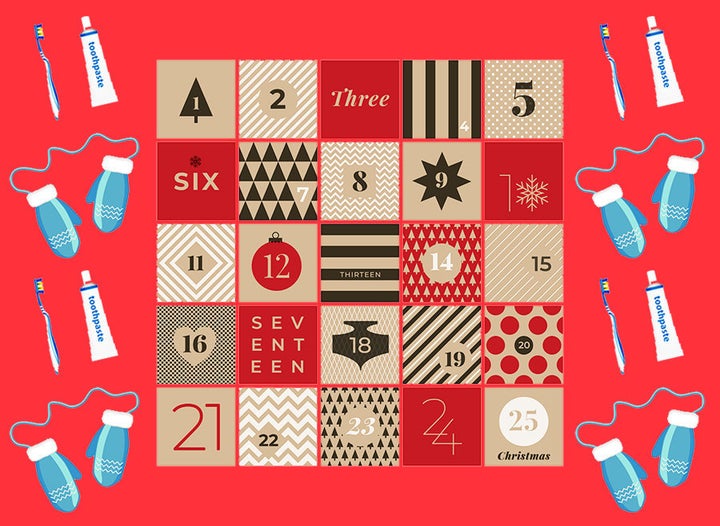
How do you count down to Christmas? You might be a staunch devotee of the classic chocolate advent calendar, enjoy an annual Lego version, or splash out on 24 days of beauty treats each year.
But there’s another type of advent calendar which, if everyone got involved, could help thousands of people across the UK. The premise of a reverse advent calendar is simple: you get a cardboard box or bag and, for every day in December, you add an item such as tinned food, non-perishables or toiletries.
Then, on Christmas Eve (or whenever your box is full – earlier is better), drop it off at your local homeless shelter.
Sadly these calendars are much-needed. New figures by leading food bank provider the Trussell Trust shows December was the busiest month for food banks last year – 186,185 three-day emergency food parcels were provided to people in crisis. Of these, 78,536 went to children.
Demand was 44% higher than the monthly average for the 2018-19 financial year and up again from the year before – in December 2017, it provided 159,388 three-day emergency food supplies to people in crisis.

It was Canadian Julie Van Rosendaal who first highlighted the idea of a reverse advent calendar, when she appealed for donations for her local food bank in place of calendars in November 2015.
The concept took off in the UK a month later, when South Shields resident Louise Scott pledged to donate a calendar to her local homeless shelter. A number of charities have since got onboard with the idea, including Changing Lives, which provides support for vulnerable people and their families.
“Simple things most of us take for granted like toothbrushes or warm socks are in constant demand,” a charity spokesperson said. “We also appreciate gift items such as toiletries, pyjamas or toys.
“We saw tears of joy from people who were in despair about what Christmas would mean for them and their families, who were then able to have a happy Christmas thanks to the generous British public.”
For those thinking of making a reverse advent calendar, there are some things to consider. First: don’t wrap the items as volunteers will then have to unwrap them prior to giving them out to people in crisis. Second: only put new items in the box, (nobody wants to receive a packet of half-eaten biscuits).
What To Put In Your Reverse Advent Calendar
- Toiletries such as a toothbrush, toothpaste, deodorant, shampoo and conditioner, shower gel, moisturiser.
- Sanitary items.
- Warm socks, gloves and hats.
- Non perishable food items such as tinned food, cereal, sugar, teabags, biscuits.
- Pyjama sets.
- Toys.
- Books.
- Gift sets.
- Diaries.
It’s best not to include razors or alcohol, and avoid adding any foods that will go off such as refrigerated items or fresh produce. Check tins to make sure they haven’t gone past their expiry date.
The calendar is a great way for parents to teach kids about the importance of kindness, while also introducing them to more difficult societal issues like homelessness. “We’ve heard anecdotes from families and schools who have used the reverse advent calendar as a way to show children a different side to Christmas,” said Changing Lives’ spokesperson.
“It introduces them to the joy of giving. And it is a gentle way to introduce quite difficult social concepts whilst showing we all have the power to make change happen. It is a really empowering way to reclaim Christmas and make it about more than receiving.”